The flag of Mozambique stands as a vibrant and meaningful symbol, reflecting the nation’s uniqueness and prosperity. This emblem is a powerful representation of Mozambique, echoing its people’s struggles, triumphs, and enduring spirit. It stands to the nation’s resilience and unwavering commitment to progress and sovereignty.
Flag of Mozambique
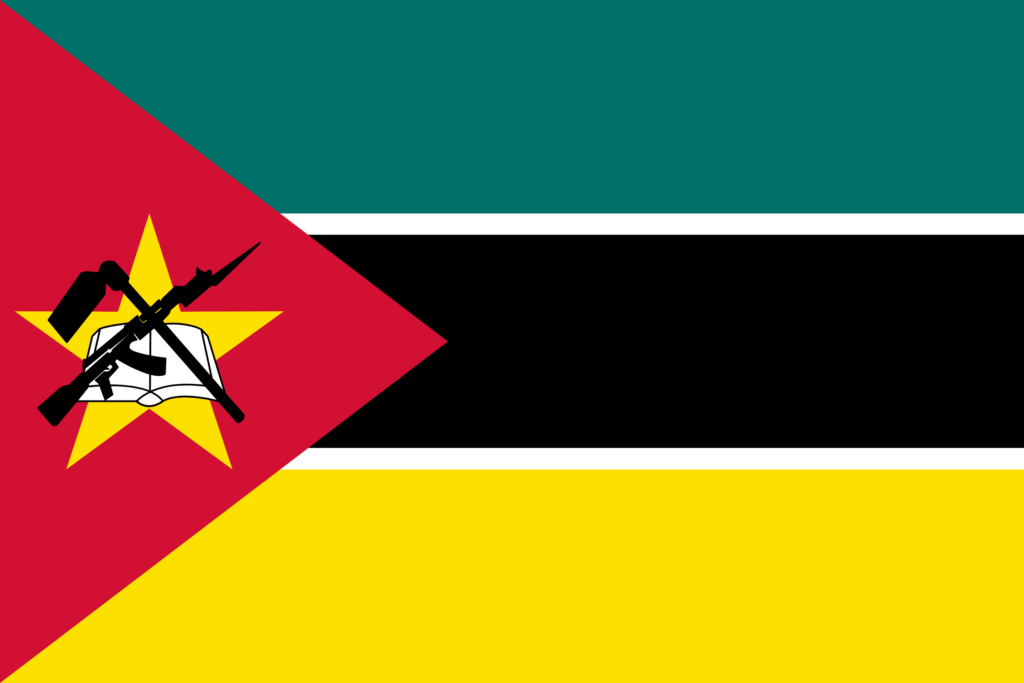
The flag of Mozambique is distinct with its three horizontal stripes and a red triangular hoist. The stripes are colored green, black, and yellow, each separated by thin white lines. A notable feature of this flag is the emblem on the red triangle, consisting of a yellow star, an open book, a crossed hoe, and a rifle.
This emblem is a powerful representation of the nation’s educational values, agricultural heritage, and the significant role of armed struggle in its history, recognized for its unique symbolism and striking visual identity.
Flag of Mozambique: Color Palette
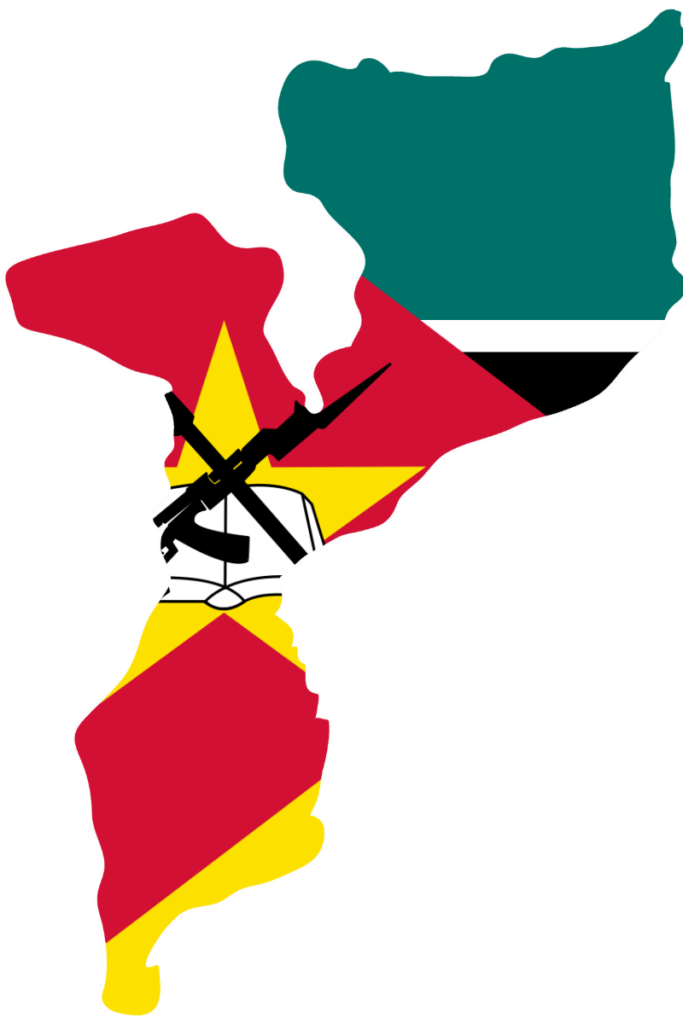
Mozambique Flag Emoji: 🇲🇿
The color palette of Mozambique’s flag comes with deep meaning and symbolism rooted to Mozambique, with each hue thoughtfully chosen to reflect various aspects of the nation’s character and history. These colors combine to create a visually striking and deeply symbolic national emblem.
Meaning of Each Color
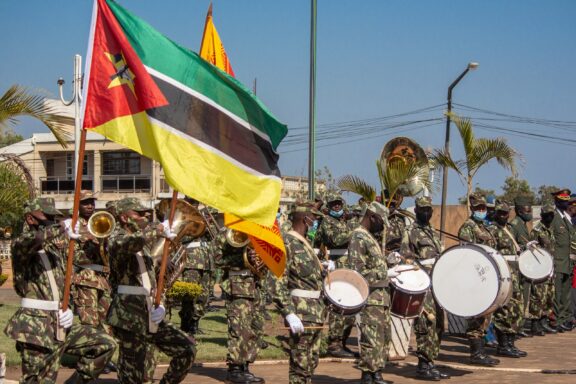
Green
The green stripe in Mozambique’s flag symbolizes the country’s rich and fertile lands. Historically, green has been associated with agriculture, a crucial part of Mozambique’s economy and culture.
This color reflects the nation’s agricultural roots and commitment to harnessing its lands’ natural wealth for sustainable development.
White
White, used in the thin lines separating the stripes, represents peace. This is particularly significant in Mozambique’s context, given its history of colonial rule followed by a prolonged civil war.
Including white symbolizes the nation’s aspirations for harmony and unity following periods of conflict and upheaval.
Black
The black stripe represents the African continent, acknowledging Mozambique’s geographic and cultural identity as an African nation. This color serves as a reminder of the country’s roots and the shared ancestry and struggles of the African people.
Yellow
Yellow stands for the country’s abundant mineral resources. Mozambique is known for its rich deposits of minerals like coal, natural gas, and precious stones.
This color highlights the importance of these natural resources in the nation’s economy and their role in shaping its prospects.
Red
The red triangle symbolizes the struggle for independence. This color is often associated with revolution and sacrifice, reflecting the bloodshed during Mozambique’s fight against Portuguese colonial rule and its pursuit of self-governance and national sovereignty.
Coat of Arms of Mozambique
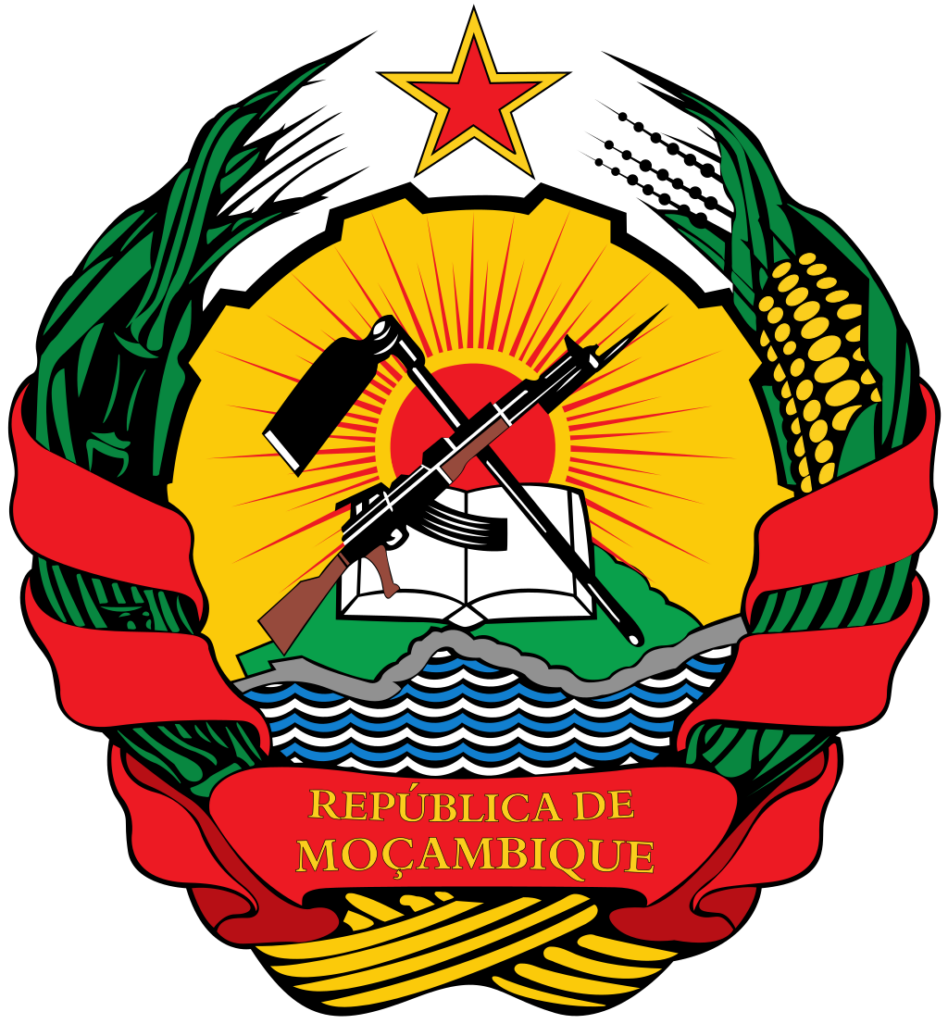
The Coat of Arms of Mozambique is emblematic of the nation’s resilience, origins, and forward-looking aspirations.
A shield with significant symbols is central to the Coat of Arms. The shield itself is divided into sections, each representing different aspects of Mozambique’s identity:
- The Gear: At the shield’s base is a gear, symbolizing industry and the nation’s commitment to progress through industrial development.
- The Hoe and Rifle: Superimposed on the gear are a hoe and a rifle, crossed in a symbol of defense and agricultural productivity. The hoe signifies the importance of agriculture in Mozambique’s economy and culture, while the rifle represents the nation’s struggle for independence and self-defense.
- The Book: Above the gear, hoe, and rifle, there is an open book, a symbol of the importance of education in Mozambique. This reflects the nation’s focus on education as a key to future development and empowerment.
- The Star: Crowning the shield is a star, symbolizing the spirit of international solidarity and Marxism, which have been influential in Mozambique’s political history.
Surrounding the shield are corn stalks and sugarcane, crops that are staples of Mozambique’s agriculture, and at the bottom, a red banner with the nation’s motto: “The Struggle Continues,” which encapsulates Mozambique’s ongoing commitment to overcoming challenges.
Historical Evolution and the Meaning Behind Changes
The flag of Mozambique has experienced a dynamic evolution, mirroring the nation’s transition from colonial rule to independence and reflecting its socio-political journey.
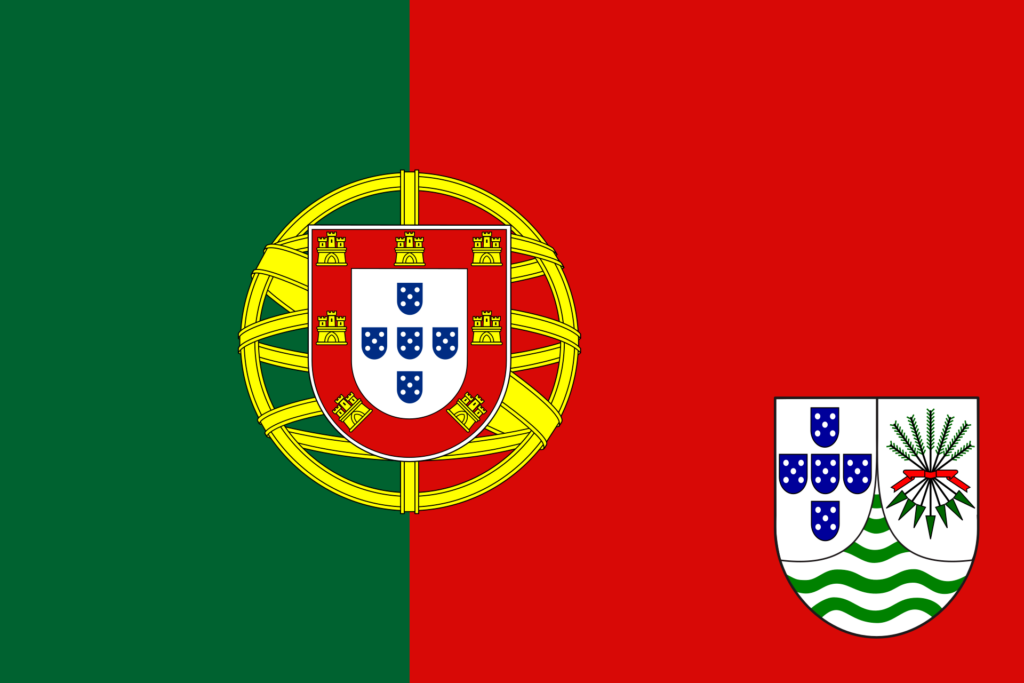
Initially, under Portuguese colonial rule, flags representing Portugal’s influence dominated. However, the emergence of the Mozambique Liberation Front (FRELIMO) brought about a flag that laid the groundwork for the current national symbol.
Following independence in 1975, the FRELIMO flag was initially adopted, characterized by green, black, and yellow stripes with a red triangle.
It wasn’t until 1983 that the emblem with the book, hoe, and rifle was introduced, each element symbolizing pivotal aspects of Mozambique’s identity – its step toward independence, agricultural roots, and the value placed on education.
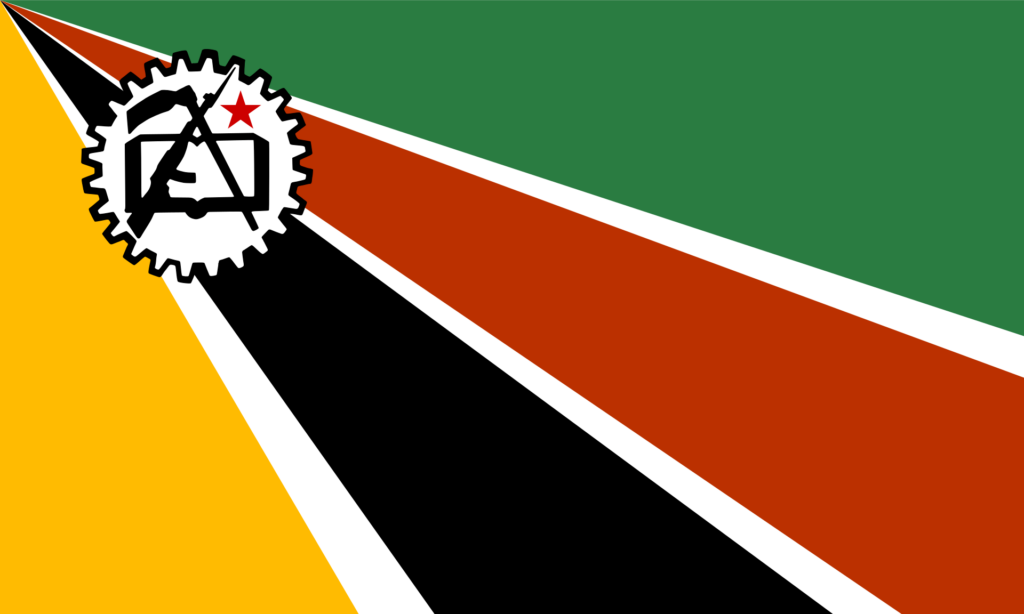
Including a modern firearm, a Kalashnikov rifle, in the flag’s emblem is particularly noteworthy. It signifies Mozambique’s recent and intense path to self-governance, a rare feature among national flags.
Despite some discussions about modifying the flag to reflect a future-oriented, peaceful Mozambique better, the current design has been retained, continuing to serve as a vivid representation of the nation’s history and aspirations.
Overall Symbolic Meaning of the Flag
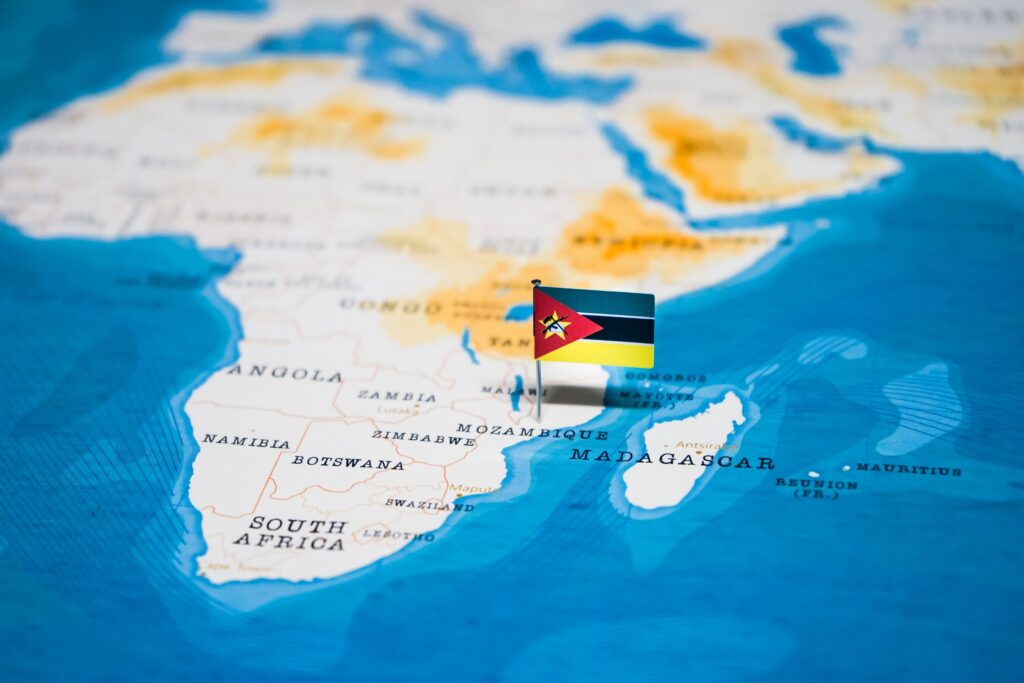
The flag of Mozambique symbolizes the nation’s strength and its journey towards independence, progress, and unity. It represents the country’s efforts, triumphs, aspirations for a brighter future, and its ongoing commitment to growth and development. The flag is a national symbol and a narrative emblem of Mozambique’s enduring spirit and aspirations.
Similar Flags to the Flag of Mozambique
The flag of Mozambique shares similarities with a few other national flags, mainly due to common themes or elements that represent shared ideals, historical experiences, or cultural connections.
Zimbabwe
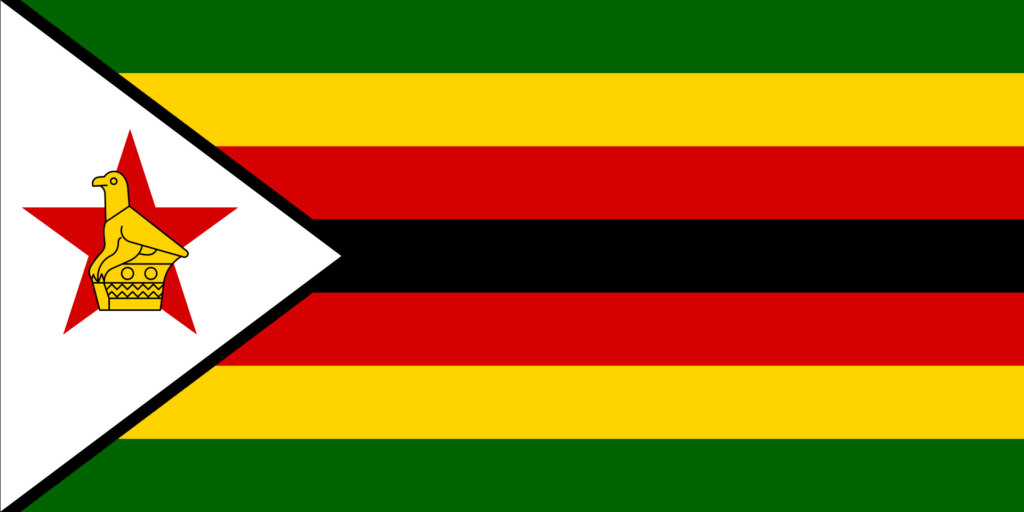
Zimbabwe’s flag features green, yellow, red, and black colors. These colors are commonly used in African nations’ flags to represent their African descent, struggles for independence, and rich natural resources.
Like Mozambique, Zimbabwe’s flag symbolizes the nation’s journey from colonial rule to independence.
South Sudan
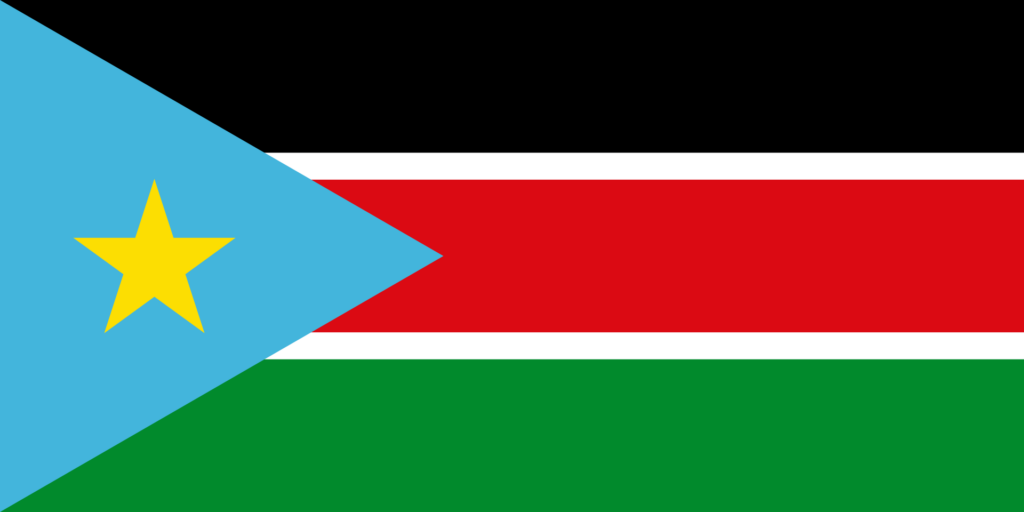
The South Sudan flag includes black, red, and green stripes, separated by white lines, similar to Mozambique’s. Although different in color and position, the presence of a star indicates a common symbol of unity and aspiration.
These similarities reflect shared themes of African identity and the struggle for independence.
Angola
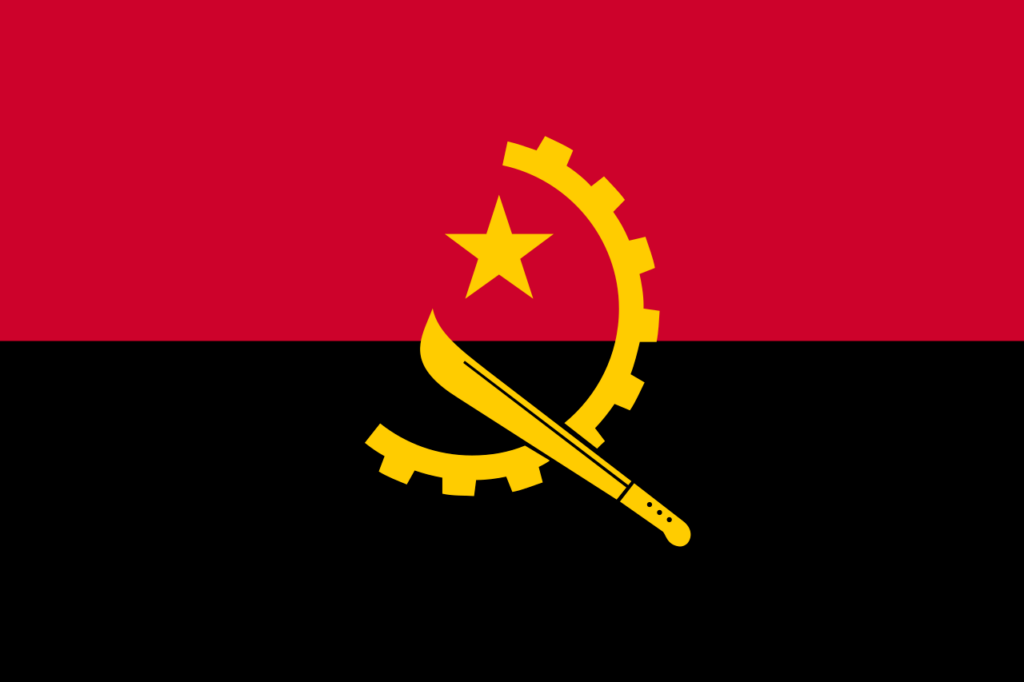
Angola’s flag features a red half at the top and a black half at the bottom, with a central motif of a gear, machete, and a star. The use of red is significant in both flags, symbolizing the struggle and sacrifice for independence.
Additionally, including tools (machete in Angola and hoe in Mozambique) reflects a common emphasis on agricultural roots and the fight for sovereignty.
Final Thoughts
Mozambique’s flag colors hold a profound significance, representing its resilience, cultural heritage, and aspirations. It stands proudly in the global community of flags, telling the story of a nation’s past struggles and future hopes, serving as a source of unity and pride for its citizens.
Image Sources and Copyright Information
- Military Band Marching with Mozambique Flag: © Ivan Bruno de M/Shutterstock
- Flag Pin on Mozambique Map: © hyotographics/Shutterstock